
![]()

![]()
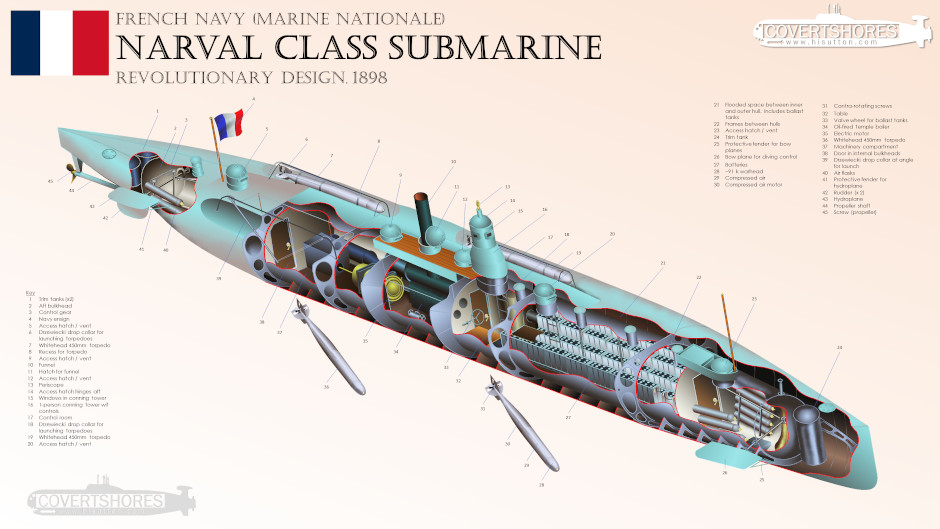
Original artwork. CLICK for high-resolution image:
The Revolutionary Submarine You Haven't Heard Of: Narval (1899)
 Many histories of submarines start with the designs of John Philip Holland. Entering service around 1900, the Holland submarines were indeed extremely influential. But that is largely a British/American perspective on history. There was, at the same time, a French designer who was arguably equally important. Maxime Laubeuf's ideas and designs literally shaped submarines to this day.
Many histories of submarines start with the designs of John Philip Holland. Entering service around 1900, the Holland submarines were indeed extremely influential. But that is largely a British/American perspective on history. There was, at the same time, a French designer who was arguably equally important. Maxime Laubeuf's ideas and designs literally shaped submarines to this day.
Laubeuf's principle invention was the double hull. This means that the pressure hull, which contains the people, is surrounded by a second outer hull. The space between the two hulls is flooded, and it can contain equipment, fuel and ballast tanks. This also allows the outer hull to be shaped differently than the pressure hull, which can make it more streamlined.
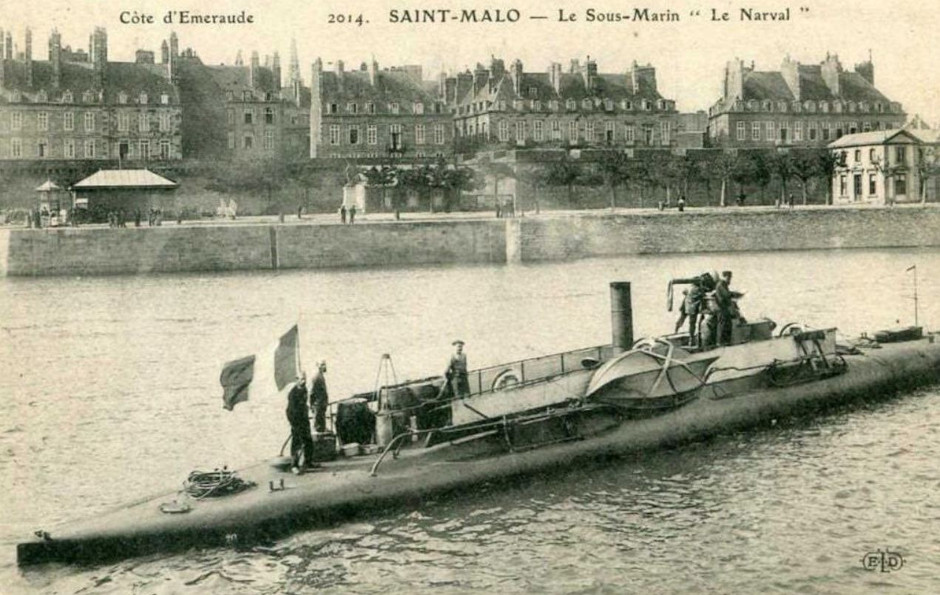
Holland's submarines, and those of other designers, were single hull. This meant that almost everything had to be fitted into the pressure hull (there was usually a small casing on the top, like a deck).
Both approaches continue to this day. The famous TYPHOON Class is an example of a double-hull submarine. Arguing which is better is beyond the scope of this article, they both have pros and cons. But Laubeuf's approach was, at some point or other, used by almost every country building submarines. Germany in particular based a lot of their highly regarded WW1 and WW2 designs on his technology.

French Navy marvel, the Narval (Q4)
Laubeuf's first submarine design was named Narval and given the number Q4 by the French Navy (Marine Nationale). As the pennant number implies it wasn't the French Navy's first submarine. France had been ahead in adopting submarine technology for its navy. There were impressive designers in several countries (the US, UK, Spain...) but their navies had been slow and risk adverse. The French Navy however had operated several designs:
- Plongeur, compressed air powered submarine launched in April 1863. Designed by Captain Siméon Bourgeois and Charles Brun.
- Q1 Gymnote, electric powered submarine launched September 1888. Designed by Henri Dupuy de Lôme, Gustave Zédé and Arthur Krebs.
- Q2 Sirène, electric powered submarine launched June 1893. Later renamed Gustave Zédé after the designer
- Q3 Morse, electric powered submarine launched July 1899. Designed by Gaston Romazotti.
- Q4 Narval, steam & battery submarine with double hull, launched October 1899. Designed by Maxime Laubeuf.
The Narval design answered a 1896 requirement for a submarine with a submerged range of 10 nautical miles at 8 knots. It also needed to have a surface range of 100 nautical miles at 12 knots, and not exceed 200 tons. The Navy had received 19 design submissions, of which Laubeuf's revolutionary design was the clear winner.
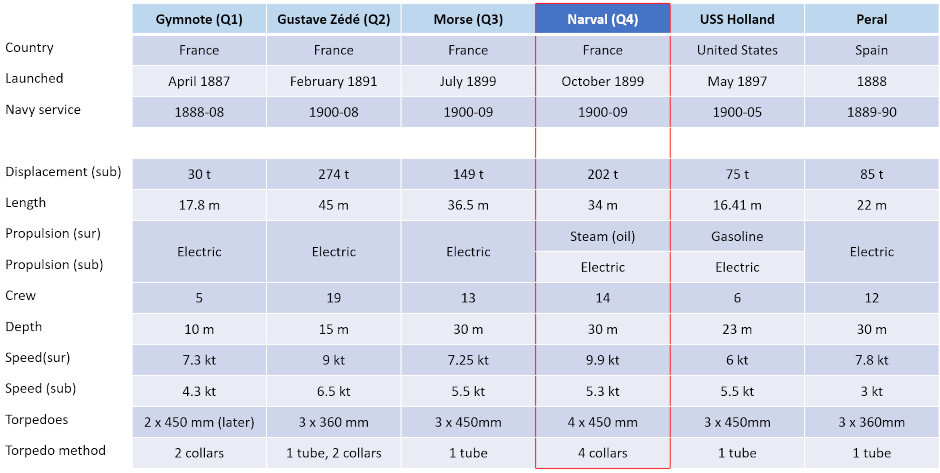
Get The essential guide to World Submarines
This Covert Shores Recognition Guide Covers over 80 classes of submarines including all types currently in service with World Navies.Check it out on Amazon
The boat was built in November 1988 and launched just under a year later in October 1889. While it doesn't seem to have fully met the original requirements, it was anyway a massive step-up in capability.
There were several factors for its ground-breaking performance. Firstly Laubeuf's double-hull technology which allowed a more boat-like shape. This provided better surface performance than typical single-hull boats of the time. And secondly (and like Holland), he separated the propulsion for surface and submerged operations. On the surface it had a small steam engine, and for submerged running it had batteries.
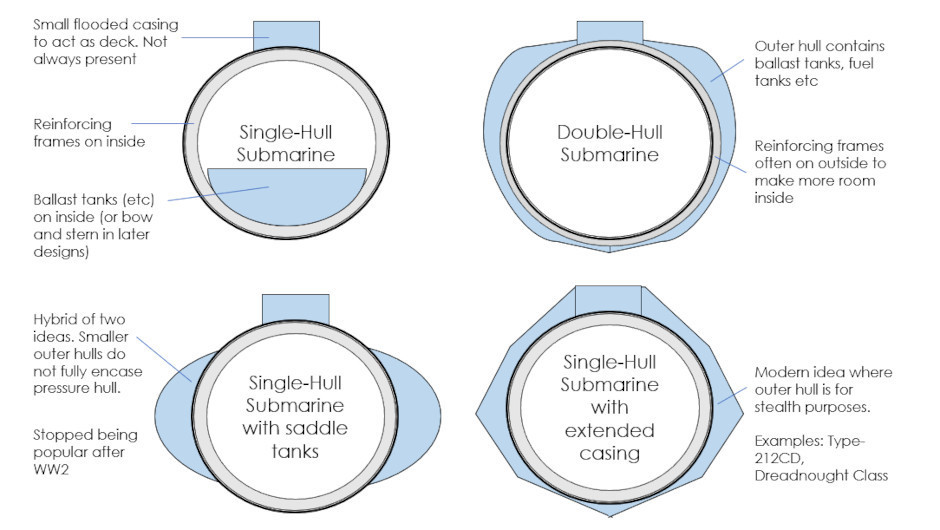
Comparative submarine cross-sections. Laubeuf created the double-hull design.
Steam power had a few drawbacks. It was painfully slow to transition from surface to submerged travel (over 20 minutes). And there was always the risk of an explosion if water got in to the boiler or machinery space. But this has to be viewed in context. At the time Holland was using gasoline (petrol) motors which are generally even more dangerous aboard a submarine. Diesel engines, which would quickly become the main choice, where still in their infancy in 1898. Steam was pragmatic.
Warfighting capabilities
Although now seen as an experimental type of boat, the Narval was built with a genuine warfighting capability. Four Whitehead 450mm (17.7 inch) torpedoes were carried. This was one more than the typical Holland Class boats.
There were two general ways of launching torpedoes at the time. Several submarines were using torpedo tubes. This allowed for reloads to be carried. The other method, which Laubeuf adopted, was drop collars. Developed by Stefan Drzewiecki, a Polish inventor who was often based in France, these carried the torpedo externally. To launch the torpedo an arm would swing out to train the torpedo on the target.
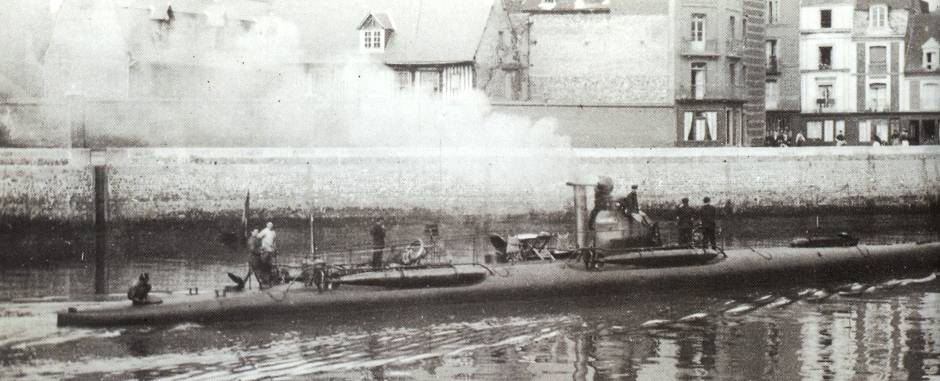
Ultimately drop collars had disadvantages compared to torpedo tubes. The torpedoes were exposed to sea water which increased maintenance and didn't work for long missions. And failure rates were higher. But at the time there were reasonable safety concerns with the operation of torpedo tubes. Later one French submarine was sunk due to water flooding in via a torpedo tube. Lessons were only learnt slowly over successive generations of submarine, in 1898 drop collars seemed fine.
I should point out that the two approaches were not mutually exclusive. Several submarines were fitted with both systems, both before and after Narval.
The ultimate book of Special Forces subs Covert Shores 2nd Edition is the ONLY world history of naval Special Forces, their missions and their specialist vehicles. SEALs, SBS, COMSUBIN, Sh-13, Spetsnaz, Kampfschwimmers, Commando Hubert, 4RR and many more.
Check it out on Amazon
Legacy
The Narval’s service life, about 9 years, was decent for the time. But her legacy was far greater. The double hull design was picked up on by engineers working in Germany and was borrowed by U-1 and many subsequent uboat designs (and export classes including, significantly, to Russia).
Laubeuf went on to design the follow up Circé, Pluviôse, and Brumaire classes. Several more French submarines by other designers continued the double hull design right up to the Agosta class which is still in service today.
The Royal Navy and US Navy have both built double hull designs. But perhaps the greatest legacy is in Russia and now China. The cast majority of these countries designs are double hull, right up to today.
Related articles (Full index of popular Covert Shores articles)

 Surcouf Cruiser Submarine w/Cutaway
Surcouf Cruiser Submarine w/Cutaway

 SMX-31 future submarine concept ('The Electric') w/Cutaway
SMX-31 future submarine concept ('The Electric') w/Cutaway

 K.A. Schilder's Rocket-Armed Submarine of 1834. w/Cutaway
K.A. Schilder's Rocket-Armed Submarine of 1834. w/Cutaway

 1913 Patent for a Submarine w/Cutaway
1913 Patent for a Submarine w/Cutaway

 World war One Type UC-1 U-boat w/Cutaway
World war One Type UC-1 U-boat w/Cutaway





 Nordenfelt steam powered submarines of the 1880s. w/Cutaway
Nordenfelt steam powered submarines of the 1880s. w/Cutaway

 American Civil War submarine H. L. Hunley
American Civil War submarine H. L. Hunley


